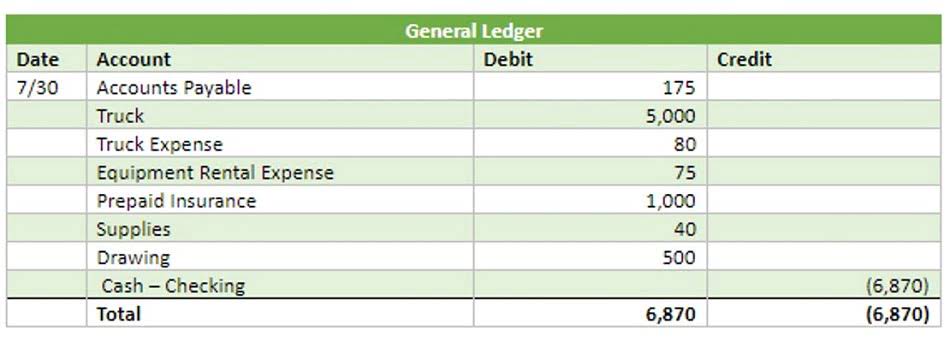
The Department is working diligently to resolve those issues and will provide additional updates as soon as they are available. Department of Education (the Department) is announcing updated deadlines to report required information under the Financial Value Transparency and Gainful Employment (FVT/GE) rules. Institutions will now have until January 15, 2025, to provide all required FVT/GE reporting and review the Completers Lists.

Sample distribution for the four most recently completed award years for program 1234xx:

The EP measure compares the median annual earnings of graduates of the program to the “earnings threshold” for the program. For a set of programs that initially qualify for the exclusion but later must report, here is an example of how that pattern may apply. Note that institutions will not have to double-report for any award years, so it is possible that an institution will have fewer than four years of reporting related to past award years to complete depending on previous reporting patterns. After your institution selects your cohort type (Standard or Transitional), our system will generate your cohort, separated by award year, for the applicable cohort period with enrollment information previously reported by your institution to Clearinghouse, using NSLDS’s prescribed logic.
Program Sanctions
The process for calculating the annual earnings of students in the cohort is described above. The IRS does not provide the Department any individual earnings data or the identity of any students who were or were not matched because it is prohibited by law from doing so. Final reporting requirements will be provided in operational guidance prior to implementation of the regulations. Below we list the major provisions of the Financial Value Transparency and Gainful Employment regulations and financial transparency then provide more detailed summaries.
My institution does not use DegreeVerify, will we still be presented with this list?
However, prior to disbursing Title IV funds to students in a non-GE graduate program with failing D/E rates, students in the program must execute a required acknowledgment of the program’s “high debt burden” designation through an ED-hosted website. If a non-GE program has a passing D/E rate but fails the EP measure, no student acknowledgement would be required prior to Title IV disbursements, though the disclosure requirements remain. Only prospective students enrolled in certificate programs or graduate programs that have received a failing D/E rate are subject to the acknowledgement requirement. A prospective student must provide the acknowledgment before the institution enters into an agreement to enroll the student in one of these programs. To be a Title IV-eligible program, an ESL or ESOL program must lead to a certificate or other credential awarded by the institution.
- This information would be made available via a new, yet to be developed, website maintained by the Department.
- This clarity concerning the dates of implementation will provide all postsecondary institutions with an extended period of time to comply with the GE and FVT measures.
- Under the July 1, 2024, regulation, institutions will be required to report all programs that share the same four-digit CIP code and have had 30 or more completers in total over the four most recent award years for both GE and non-GE programs.
- However, the Department needs additional student-specific information from institutions to calculate the D/E and EP measures and to calculate other information that the Department will disclose to students.
- Note that a program “passes” the D/E rate metric if it passes the annual rate analysis but not the discretionary rate analysis, or vice versa; a program must fail both the annual and discretionary D/E rate analysis to “fail” the D/E rate test overall.
Updated Timeline for Financial Value Transparency and Gainful Employment Reporting and Completers Lists
- The Department provided an outline of Final Rule D/E rate and EP measure calculations and thresholds at its 2023 Federal Student Aid conference—Session BO6 Gainful Employment; slides are available here.
- Schools should also use one of the two methods described above when reporting award year values in the AA Detail Record for students who are currently enrolled in more than one program at the institution as of June 30.
- In other words, GE programs include all Title IV non-degree programs at public and private non-profit institutions (commonly known as certificate or similar types of programs), as well as all Title IV Programs (including degree and non-degree programs) at proprietary institutions.
- Make sure you visit the FVT/GE page on Compliance Central for convenient access to all our resources on signing up for, activating, and using our FVT/GE reporting solution.
- Even if your institution does not offer ANY programs classified as GE-eligible under the new regulations, you must report any non-GE programs and the students attending those programs, including all recipients of Title IV and HEA funds.
The IRS calculates and returns to the Department the median annual earnings of students for whom it was able to match earnings data. If the earnings data from the IRS includes reports from records of earnings on at least 30 completers, the Department uses the median annual earnings provided by the IRS to calculate the D/E rates and EP measure for each program. For qualifying graduate programs, the two-year cohort consists of the students who completed the program during the sixth and seventh award years prior to the calendar year we use for earnings data in calculating the D/E and EP measures. The four-year cohort for such programs consists of the students who completed the program during the sixth, seventh, eighth, and ninth award years prior to the calendar year we use for earnings data in calculating the measures. This is because the reported information is used by the Department not only for the purpose of calculating the D/E and EP measures, but also for calculating some of the other information the Department will disclose on its website beginning in 2026.
Loss of Eligibility for GE Programs

The Classification of Instructional Programs (CIP) published by ED’s National Center for Education Statistics provides a six-digit taxonomic scheme that supports the accurate tracking and reporting of fields of study and program completions activity. Institutions report credentials awarded by CIP codes when completing the IPEDS Completion Survey. Institutions are also required to list individual programs by CIP on their Application for Approval to Participate in Federal Student Financial Aid Programs (E-App). The website may also include information such as the primary occupations that the program prepares students to enter, the program or institution’s completion and withdrawal rates, total net cost of attendance paid by completers, and other information pertaining to the program and the institution.
In addition to providing the English-language warning, the institution must also provide translations of the English-language student warning for those students and prospective students who have limited proficiency in English. Yes, the Clearinghouse secure site maintains data Insurance Accounting your institution submitted to the Clearinghouse and that we sent to NSLDS for FVT/GE reporting. You can use the “Download AY File” option to download a copy of the corresponding Award Year’s cohort.

The assignment of the Financial Aid Officer and Financial Aid Viewer roles for viewing and reporting your FVT/GE data is determined by your institution, and do not need be designated to any specific person or department. Therefore, contacts within your registrar, financial aid, institutional research offices, etc., could assume ownership of your institution’s FVT/GE regulation reporting. Because most institutions of higher education participate in Title IV, the burdensome requirements of the Final Rule will apply in some manner to nearly all public, non-profit, and proprietary colleges and universities. To assist you in understanding how your institution may be impacted—and what you need to do now to prepare for compliance–we provide a high-level overview of the Final Rule below, as well as specific steps your institution should consider down the long and winding road to prepare for these new requirements. (The AACS complaint is available online.) If the FVT/GE regulations are not enjoined, rescinded or otherwise delayed, the Final Rule will take effect on July 1, 2024, and institutions must report their initial tranches of pertinent data to ED by July 31, 2024.
How can I stay updated on FVT/GE and the Clearinghouse’s free FVT/GE reporting solution?
To increase transparency regarding higher education cost, financial aid, and outcomes for prospective students considering Title IV programs, the Final Rules seek to provide new consumer-minded information about the financial outcomes of individuals who complete a Title IV program. The Department will generally calculate these metrics for each Title IV program annually, based on information about eligible program completers obtained from the institution, matched against data reflecting the earnings of those program completers obtained from a yet-to-be-named agency. Institutions must report — and ED also will include in its determination of a program’s “median annual loan payment” — private education loans incurred for enrollment in the program and any other amounts owed by program completers (including any institutional extensions of credit or unpaid institutional charges). The amortization period applied to a student’s debt depends on the credential level of the program (as was true in the 2014 rule), and the interest rate applied to the calculation would be a specified three-year or six-year average also based on credential level. Specifically, if a program fails either the D/E rate or EP measure in two out of three consecutive award years, the program will lose Title IV eligibility for three years. Department of Education published the final rule on financial value transparency and gainful employment (88 Fed. Reg. unearned revenue 70004).

